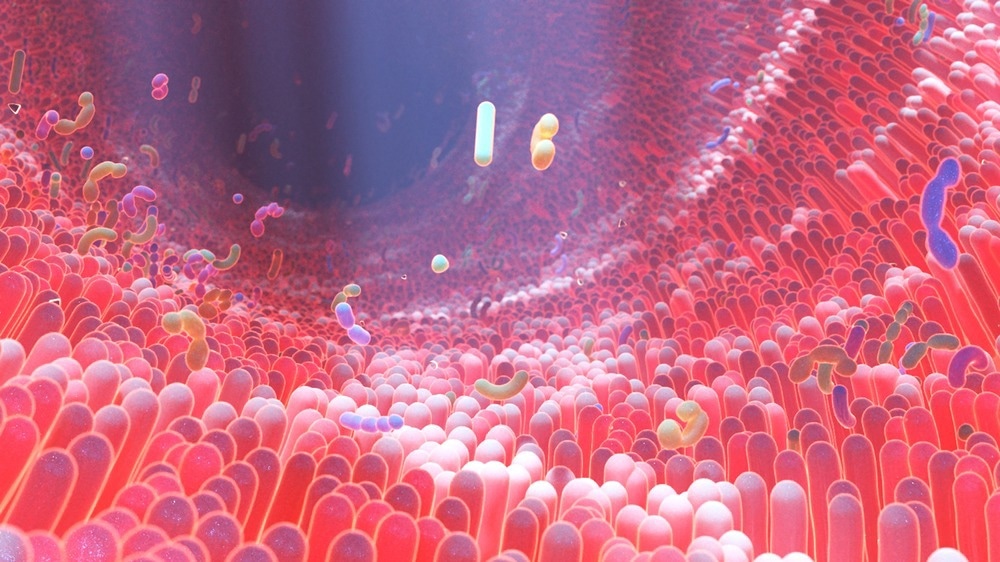These findings could lead to the development of effective therapies for the management of obesity and metabolic diseases like type 2 diabetes
 Study: Lifetime risk and projected burden of dementia. Image Credit: Alpha Tauri 3D Graphics/Shutterstock.com
Study: Lifetime risk and projected burden of dementia. Image Credit: Alpha Tauri 3D Graphics/Shutterstock.com
In an article in Nature Microbiology, researchers investigated the mechanism behind the preference for sugar and its link to diabetes, focusing on the role of a free fatty acid receptor and gut microbiota.
Their findings indicate that decreased expression of this receptor in mouse models and diabetic patients is linked to higher sugar intakes.
Background
Animals are biologically hardwired to crave sugar, but high sugar consumption can increase blood glucose and the risk of developing metabolic diseases. The exact causes of diabetes remain unclear, though factors like obesity, diet, genetics, and aging contribute to its onset. High sugar intake is a significant environmental risk linked to increased rates of cardiovascular disease, type 2 diabetes, and obesity.
The rising consumption of sugar-rich foods worldwide has led to a preference for sugary diets, which scientists believe is driving overconsumption and the growing diabetes epidemic. Sugar preference develops when animals associate the taste of sugar with its internal effects. However, the mechanisms behind this behavior are not fully understood due to complex interactions between the nervous and hormonal systems.
The gut microbiota, which impacts immunity, metabolism, and brain function, may play a role in shaping dietary preferences. Studies show that gut bacteria influence food intake and appetite regulation through the gut-brain axis.
Changes in gut microbiota have been linked to dietary behaviors, suggesting potential targets for diabetes treatment. Specifically, free fatty acid receptors like Ffar4, activated by long-chain fatty acids, may connect genetic and environmental factors in regulating dietary preferences. Understanding this link could help in managing sugar preference and diabetes.
About the study
Xinmiao Liang, Yong Chen, Shenglong Zhu, and colleagues collected peripheral blood from 60 individuals with type 2 diabetes and 24 healthy controls, all meeting the American Diabetes Association criteria. Ffar4 messenger ribonucleic acid (mRNA) expression was assessed. Additionally, fecal samples from 45 diabetic and 15 healthy individuals were analyzed to quantify the content of Bacteroidesvulgatus, a gut bacterium. Participants provided informed consent, and ethical approvals were secured.
For the animal study, 18 male mice were housed under pathogen-free conditions with environmental controls for humidity and temperature and given access to water and food. Ethical guidelines for animal care were followed.
Mice were anesthetized for surgical procedures, including drug infusions and gene silencing in the brain. Microglia were isolated using density gradient centrifugation after brain tissue digestion and filtration.
Dietary preferences were tested by offering mice high-fat or high-sugar diets alongside normal diets. Liquid preference was assessed using two-bottle assays with different sugar solutions. Co-housing experiments were conducted to observe behavioral interactions among different mouse strains.
Mice underwent antibiotic treatment followed by fecal microbiota transplantation. Gene sequencing analyzed microbial community composition and diversity. B. vulgatus was cultured under anaerobic conditions, and metabolomic analysis was done by assessing bacterial metabolites.
Various cell lines were cultured, and mice received treatments like pantothenate and liraglutide to study their effects on glucose metabolism.
Findings
Researchers found that Ffar4 expression was significantly reduced in diabetic patients and mice. Lower Ffar4 levels were associated with a stronger preference for sugar. When Ffar4 was specifically deleted in the intestines of mice, their sugar preference increased. Conversely, overexpressing Ffar4 in the intestines reduced their sugar craving.
The study identified a key mechanism involving the gut bacterium B. vulgatus. Ffar4 modulates the abundance of B. vulgatus, which produces a metabolite called pantothenate. Pantothenate boosts the secretion of the hormone glucagon-like peptide-1 (GLP-1), which in turn stimulates the liver to release a hormone that reduces sugar preference. Lower levels of B. vulgatus and pantothenate were observed in diabetic mice, correlating with increased sugar consumption.
Further experiments confirmed that supplementing B. vulgatus or pantothenate reduced sugar preference in diabetic mice and lowered their fasting blood glucose levels. This suggests that targeting the Ffar4-B. vulgatus-pantothenate pathway could be a potential strategy for managing sugar cravings and improving glucose regulation in diabetes.
Conclusions
This study explores the link between gut microbiota, specifically Bacteroides vulgatus, and sugar preference, revealing a role for the Ffar4 receptor in this process. Ffar4, primarily known for its involvement in fatty acid metabolism, also influences sugar cravings.
The research highlights that Ffar4 deficiency reduces B. vulgatus levels, impacting the production of pantothenic acid. This metabolite boosts GLP-1 hormone secretion, which stimulates the liver to release a hormone regulating sugar intake by signaling to the brain.
The study confirms that this hormone, called FG21, directly affects sugar preference independent of GLP-1 receptors in the brain. The findings suggest that targeting Ffar4 or supplementing with specific probiotics may help prevent diabetes by modulating sugar preference.
Additionally, the authors noted the importance of gut-liver-brain interactions in dietary behavior. They called for further research on how the brain's reward systems might be involved in Ffar4-mediated sugar cravings.
Journal reference:
- Free fatty acid receptor 4 modulates dietary sugar preference via the gut microbiota. Zhang, T., Wang, W., Li, J., Ye, X., Wang, Z., Cui, S., Shen, S., Liang, X., Cheng, Y.Q., Zhu, S. Nature Microbiology (2025). DOI: 10.1038/s41564-024-01902-8
https://doi.org/10.1038/s41564-024-01902-8